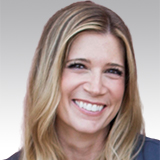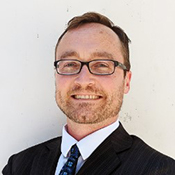Welcome to WordPress. This is your first post. Edit or delete it, then start writing!
Important Rules Updates for New York
Important Rules Updates for
New York
As part of American Legal Net’s ongoing support of our clients, we want to share some important rules updates and announcements. Our Court Rules team of over a dozen licensed attorneys is constantly monitoring the rules to keep our rules calculations as current as possible. If you have any questions, comments or feedback please let us know at CourtRules@AmericanLegalNet.com USCA 2nd Circuit Court of Appeals: Amendment to Local Rule 31.2(a)(2), effective June 13, 2019, which extended the time to file reply briefs from 14 days to now 21 days from the filing of the last Appellee’s Brief. Click here for the order > NY Court of Appeals (Highest court in NY):2020 Calendar of Sessions The NYS Court of Appeals released its 2020 Calendar of Sessions. The schedule set forth below includes the appeal sessions as well as the Court’s conference days, which are scheduled for June 18 and 19, and December 10 and 11. May 19 is a special election appeals session day. Click here for the notice > USDC, SDNY: Launched Courtroom Wi-Fi Pilot Program as of 7/2/19. Two Judges have already adopted practices related to this announcement. See below for links to the court’s announcement of the pilot program, and to the individual Judges procedures regarding same. Announcement to the Bar > July 8, 2019 | Judge Jesse M. Furman Electronic Device and Wi-Fi Access Instruction > July 2, 2019 | Judge Paul E. Davison Electronic Device and Wi-Fi Access Instruction >
Continuing Education with Professor Connors Part III
 Continuing Education with Professor Connors
Continuing Education with Professor Connors
As part of ALN’s continuing support of the National Docketing Association we offer educational videos from distinguished legal educators like Professor Patrick M. Connors, the Albert an Angela Farone Distinguished Professor in New York Civil Practice at Albany Law school. In this video, Part 3 of this 3 Part Series, he shares further insights on some of the most critical New York practice rules.
Check out the video!
July 15, 2019 Court Rules Update
New Court Rule Sets Available:
None
Courts Removed:
USDC, California, Central District, Hon. Manuel L. Real (MLR)
Detailed information regarding updated rules can be found on the Rule Update Details page.
ALN Risk Management Learnings
ALN Risk Management Learnings
Here is a short video by Audrey Priolo, one of over a dozen Attorneys with American LegalNet, and is the first in our new series – ALN Risk Management Learnings – where we will be talking about case law and court rules, as well as related deadlines, and best practices relative to risk management for law firms.
If you want to learn more about this subject or want to share any suggestions on this or future topics, please leave a comment below.
Click HERE to read the full article.
Rolling, Rolling, Rolling, Keep Those Deadlines Rolling

Rolling, Rolling, Rolling, Keep Those Deadlines Rolling
by Audrey Priolo, Litigation Review Attorney
On July 4, Southern Californians felt the unsettling feeling of a 6.4 rolling magnitude earthquake. My heart certainly skipped a beat for a moment waiting to see if the “big one” was coming. Similarly, many attorneys have had the same heart stopping feeling about procedural deadlines. To avoid these panic moments, it is important to know the minutiae of legal deadlines.
Most legal professionals are fully aware of the existence of codes that roll procedural deadlines falling on weekends and holidays. For example, Federal Rule of Civil Procedure 6(a)(1)(C) states, “if the last day is a Saturday, Sunday, or legal holiday, the period continues to run until the end of the next day that is not a Saturday, Sunday, or legal holiday.” In California, Code of Civil Procedure Section 12a, gives the applicable rule, “If the last day for the performance of any act provided or required by law to be performed within a specified period of time is a holiday, then that period is hereby extended to and including the next day that is not a holiday.” Ostensibly, these rules seem simple. However, not all rolling statutes can be treated equally. When a second procedure rule is layered onto the first, things become much more complex.
Start with the Federal service offset. FRCP 6(d) states:
Additional Time After Certain Kinds of Service. When a party may or must act within a specified time after being served and service is made under Rule 5(b)(2)(C) (mail), (D) (leaving with the clerk), or (F (other means consented to), 3 days are added after the period would otherwise expire under Rule 6(a (emphasis added).
Compare California Code of Civil Procedure’s service offset. CCP 1013(a) states:
“…but any period of notice and any right or duty to do any act or make any response within any period or on a date certain after service of the document, which time period or date is prescribed by statute or rule of court, shall be extended five calendar days, upon service by mail,…” (emphasis added).
Notice that the FRCP indicates the service offset is added after the original calculation would expire, but the CCP states the time period is extended. Accordingly, calculations in California State Court and California Federal Court cannot be treated the same. In order to ensure that the FRCP is fully abided by, a party must complete the full time calculation, including a weekend/holiday roll (if applicable) – then the service offset is added and another weekend/holiday roll is applied (if applicable). However, in California, the weekend/holiday roll is only applied once.
Each jurisdiction gives differing language regarding how service offsets should be applied. Accordingly, it is important for diligent practitioners to check each jurisdiction to ensure legal filings are in full compliance and procedural deadlines are properly calculated. Further, it is always possible that individual courts will interpret cases and codes uniquely. Therefore, it is always the best practice to use the most conservative deadline possible to ensure that a deadline is met and not missed.
Audrey L. Priolo is a licensed California attorney with over 13 years of litigation and trial experience, who now works at American LegalNet as a Litigation Review Attorney. Questions may be directed to apriolo@alncorp.com
July 1, 2019 Court Rules Update
New Court Rule Sets Available:
Iowa Court of Appeal (IACOA)
Iowa Supreme Court (IASC)
New York Supreme Court, New York County, Hon. Arthur F. Engoron (NYNYAE)
New York Supreme Court, New York County, Hon. Lyle E. Frank (NYNYLF)
New York Supreme Court, New York County, Hon. Alan C. Marin (NYNYAL)
New York Supreme Court, New York County, Hon. Adam Silvera (NYNYAD)
New York Supreme Court, New York County, Hon. Lillian Wan (NYNYLW)
Tennessee Circuit Court, 30th Judicial District, Shelby County (TN30JD)
USBC, North Dakota (NDB)
USDC, California, Southern District, Mag. Michael S. Berg (CAMSB)
USDC, California, Southern District, Mag. Ruth B. Montenegro (CARBM)
USDC, Illinois, Northern District – Magistrate Judges (NDILMJ)
USDC, Illinois, Northern District, Mag. Sunil R. Harjani (ILSRH)
USDC, New York, Southern District, Mag. Ona T. Wang (NYOTW)
Courts Removed:
None
Detailed information regarding updated rules can be found on the Rule Update Details page.
The Challenge of Answering Legal Questions…When An Attorney Asks
 The Challenge of Answering Legal Questions…When An Attorney Asks by Kevin Pray, Senior Director of Product Management
The Challenge of Answering Legal Questions…When An Attorney Asks by Kevin Pray, Senior Director of Product Management
Answering questions with precision and accuracy is at the core of what docketing professionals do, dozens of times a day. We have all had questions from attorneys about deadlines or even procedural topics that have the potential to make you break out in full ‘flop sweat’, as you try to untangle the logic behind a statute, when even the attorney was confused by it. As I sat down to grade some docketing exercises today, it occurred to me that it is entirely possible to answer a question too precisely. Let me explain with just the right amount of detail.
First, the background: ALN requires any attorney who applies to help manage our court rules to take a brief test we call the Attorney Exercise, or AE. No, you cannot see it. I was grading them today because I’d heard that not many attorneys do well on the test, despite a range of experience and professional backgrounds. This turned out to be true.
It took me a while to get the grading right, however, because at first I was simply playing T.A. and attempting to grade straight from the answer key. No, you cannot see it. We ask seven questions across three scenarios. But the answers weren’t lining up with what I was seeing on the (barely half a page) answer key. I graded the work of five attorneys, whose returned results ranged from four pages to twenty-five pages, with diagrams. The thought occurred to me: I would never answer an attorney’s question about a deadline like this.
Probably one of the most common types of questions we get requires us to help interpret a law and break down the logic of one or more deadlines, a similar exercise to ALN’s Attorney Exercise. While pondering whether this was how attorneys answered every question on the Bar Exam, and what a nightmare that must be for the graders, I realized that the communication docketing professionals become skilled at is one of the ‘soft skills’ of working in a law firm, communicating with attorneys in a way that works well with the ‘way attorneys think.’ We all know that nebulous specter.
As we carry on with conversations about how to elevate the role of docketing, docketing professionals should take a moment to consider just how many things you know about how law firms run, how the law works, “who is who” at the firm, and how to do just about anything through proper channels at the place you work. These are ‘soft skills,’ but also unfortunately almost invisible skills.
Docketing professionals work in a niche. Because not many people understand the full extent of what we do, it’s easy for our knowledge to be undervalued. But the knowledge and the feedback you provide us on everything from the technical aspects of the software, to interpretations of rules, is incredibly valuable to us at ALN. I personally hope that you know your worth, to borrow a phrase from a popular social movement, not just because I lived in that world once and believe that docketing expertise is highly undervalued, but because as the role of docketing professionals increases in value to our clients, the value of what we offer does as well. And if you should ever need help answering any of those complex questions, please don’t hesitate to reach out to our team, Joseph Scott, Dan Biegel, or myself.
Continuing Education with Professor Connors
 Continuing Education with Professor Connors
Continuing Education with Professor Connors
As part of ALN’s support of the National Docketing Association and to helping educate law firms, we offer educational videos from distinguished legal educators like Professor Patrick M. Connors, the Albert and Angela Farone Distinguished Professor in New York Civil Practice at Albany Law school as he discusses New York Statewide Practice Rules for the Appellate Division.
As the authoritative source for guidance on New York practice matters, Professor Connors is a frequent lecturer at CLE programs on recent developments in New York Practice, professional ethics, legal malpractice and civil procedure. In this video he shares his insights on some of the most critical and interesting New York practice rules. This is part two of a three-part series where he discusses various rules, gives great examples, practical tips and strategies for dealing with the obligations and ethical requirements for attorneys as related to these rules.
Check out the video!
Ongoing Education with Professor Connors
 Ongoing Education with Professor Connors
Ongoing Education with Professor Connors
As part of ALN’s continuing support of the National Docketing Association and to helping educate law firms, we offer educational videos from distinguished legal educators like Professor Patrick M. Connors, the Albert and Angela Farone Distinguished Professor in New York Civil Practice at Albany Law school as he discusses New York Statewide Practice Rules for the Appellate Division.
As the authoritative source for guidance on New York practice matters, Professor Connors is a frequent lecturer at CLE programs on recent developments in New York Practice, professional ethics, legal malpractice and civil procedure. In this video, which is part one of a three part series, he shares his insights on some of the most critical and interesting New York practice rules. This is part one of his discussion of the rules and as you will see, he takes some dry issues and brings them to life by giving great examples, practical tips and strategies for dealing with and/or planning for “trouble,” resolving “conflicts” between the rules, and the obligations and ethical requirements for attorneys as related to these rules.
Check out the video!

